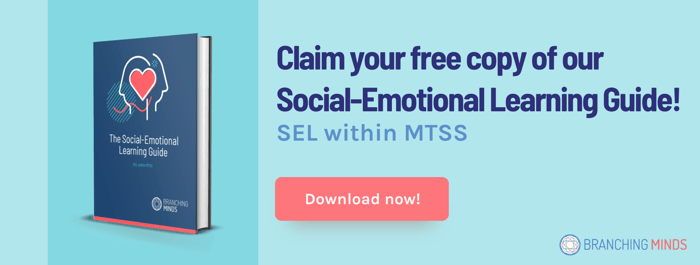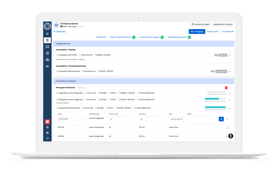In education, I know what keeps me awake at night.
I would imagine that each professional in their chosen career, when asked, could identify the thing that keeps them up at night. For the day trader, it might be an unexpected stock market crash. The comedian could lie awake in fear of an empty auditorium. Restless nights may come to the dentist who lays awake thinking of drilling the wrong tooth, or the professional athlete who misses the field goal to miss the playoffs.
There is no shortage of things in education to keep teachers and school administrators awake. The question that plagues my nighttime rest is…will my students be adequately prepared on every level to navigate their post-graduation experience?
After all the worrying and planning about the master schedule, the academic rigor, the hallway chaos, and the parent calls, I drift back to the fundamental understanding that the socialization and education that students experience in their secondary schools extends far beyond their relationship with academic learning. This realization places an urgency on implementing systematic social and emotional learning in our high schools. When intentional instruction and support for these skills are in place, not only can I rest a bit easier, the impact on the students—both in school and beyond—is notable.
|
|
The socialization and education that students experience in their secondary schools extends far beyond their relationship with academic learning.
|
|
Moving Past Graduation Rates: Case for SEL
In any secondary school system, there is tremendous emphasis on graduation rates and academic performance. While graduation rates are an important indicator of school success, other gauges of student growth are also important, including attendance, engagement, academic skill mastery, and social interactions. Social and emotional learning helps provide connections that cohesively link social skills to academic performance and real-world success.
Although mature social skill sets are in high demand in the workforce, in relationships, and in society in general, explicit instruction and continued practice of these competencies are often overlooked in secondary school environments. The SEL competencies of social and self-awareness, self-management, decision-making, and relationship skills are critical for satisfaction and success beyond the walls of academic institutions and deserve priority implementation in the secondary programming of instruction.
We know that intentional implementation of SEL supports on secondary campuses can have a positive impact on a myriad of student success factors: As recent as 2017, an extensive study was completed that shows when school campuses have explicitly taught a minimum of one of the five SEL competencies (as identified by CASEL):
- There was as much as a 6% increase in graduation rates in high school students, as compared to a control group that was lagging in SEL implementation and instruction.
- Tracked student participants show additional success in college attendance, decreased dropout rates, and even college graduation rates.
- The HS graduation data points indicate a positive shift in other behavior, including decreasing numbers of risky behaviors (sexual activity, drug usage), decreased arrests, and a drop in behavior referrals.
These results directly impact the quality of our students' adult lives and society at large. High school graduation rates relate directly to take-home pay. Ultimately, increased implementation of SEL instruction and support will impact graduation rates, which continues to be an economic driver in the United States.
Educators and Employers Believe SEL Is Important
While school systems are still working to implement SEL needs across their districts, educators and employers are already aware of its importance. Teachers and school leaders acknowledge the importance of teaching explicit SEL skills. It’s agreed that access to and practice of SEL competencies will be vital in creating beneficial school environments and usher in skills necessary for students to cross the threshold into young adulthood.
Future employers are increasingly looking for “soft skills” that extend beyond academic success, making the need for individual SEL understanding imperative. Students well-versed in SEL competencies will be in high demand as our workforces continue to work in teams, develop leaders, and utilize relational capital. Secondary students need these SEL skills to be successful in school and beyond.
Knowing the value teachers and employers place on the acquisition and practice of SEL competencies can set the stage for commitment to supporting students within the SEL systems on individual campuses in your districts. Teacher and leader commitment is primed and ready for adoption, knowing the impact it will have as the foundation for personal and communal success is laid.
Challenges in Secondary School SEL Implementation
Despite the positive impact of SEL implementation in secondary schools, there are challenges:
- Lack of time in the school schedule
- Staffing shortages
- Lack of training
- Finding relevant, easy-to-use SEL curricula
It’s easy to see why effective SEL programming can take a back seat with the urgent needs currently being faced in schools. As both immediate and long-lasting benefits of secondary SEL adoption are considered, the correlation between intentional, secondary SEL instruction and increased academic outcomes are evident. While it can feel counterintuitive to decrease academic instructional time to allow for intentional and explicit instruction, specific, documented academic gains are linked to a deeper understanding of the five social and emotional competencies.
💡 Related Resource: MTSS in Secondary School: Major Challenges, and How To Overcome Them
Incorporating SEL in the MTSS Framework
There is a twofold nature to the systemic implementation of SEL competencies and systems at the secondary level:
- Universal instruction in social and emotional skills
- Interventions to support skill development and behavioral change for struggling students.
Universal SEL Instruction for Secondary Students
The most efficient way to reach all students with intentional SEL instruction is a campus or district-wide adoption of an SEL curriculum that can be taught and reinforced over time and across settings. Direct instruction can be provided for all students or for students in high-leverage grade levels such as 6th grade and 9th grade, to set students up for success. Effective curriculums for secondary schools mirror research for primary grades, including adopting the S.A.F.E. framework:
-
Sequenced: Activities and learning are explored in a connected and coordinated fashion.
-
Active: Utilizes active forms of learning in conjunction with opportunities to reflect and practice taught skills.
-
Focused: Clearly emphasizes developing personal and social skills rather than just general well-being
-
Explicit: Targets specific instruction and goals for social and emotional learning.
Interventions That Support Skill Development
Secondary schools that are implementing social-emotional learning programs also need tosupport students who may struggle to change patterns of behavior. When considering interventions within the MTSS model, it is important to consider underlying causes:
- Is the behavior the result of a missing or lagging skill?
- Are there factors in the school environment that are triggering or reinforcing the behavior?
- Are the expectations for the student reasonable?
- Does the student need additional reinforcement to change a longstanding pattern of behavior?
Tier 2 and 3 behavior intervention plans should reinforce the universal SEL instruction already occurring, and incorporate additional social-emotional instruction, practice, and reinforcement tailored to students’ specific needs.
Programs such as Check in Check Out (CICO) provide the structure, set-apart time, and relationship support needed for students to practice SEL competencies. Students in CICO at the secondary level can also move to self-monitoring, a very effective way of scaffolding the student to self-awareness and independence. Ultimately, an intervention that incorporates intentional SEL can shift a secondary experience for struggling students, providing care and support without which the student may not be successful.
💡 Related Resource: Integrating SEL Into an MTSS Framework: Resolving Four Common Problems
Wrapping up SEL Implementation
Secondary SEL implementation benefits students, school culture, and academic outcomes in a myriad of ways. SEL competencies support the quantitative outcomes schools seek, such as higher graduation rates and fewer behavior referrals. And, systemic SEL adoption allows students to learn about and practice the “soft skills” that lead to more regulated, holistic, adaptable, and healthy young adults entering college and career paths.
As you begin adjusting, perfecting, tweaking, and growing SEL instruction and interventions on your secondary campus, rest assured that you are having an impact within the school walls and beyond. This is something that allows educators to sleep better at night. Sweet dreams!
Before you go...
- Branching Minds can help screen and intervene for Social, Emotional, and Behavior Wellness. Ask for a demo today!
- Watch the BRM webinar discussing the benefits and how-tos of Tier 2 Behavior Intervention Programs below. ⬇️
ON-DEMAND WEBINAR:
Check In Check Out and Beyond: Tier 2 Behavior Interventions That Build Relationships and Foster School Connectedness
| |
Key Takeaways:
-
Systemic implementation of SEL at the secondary level is impactful and important to students, staff, and society.
-
SEL instruction leads to higher graduation rates and more satisfied employers
-
Social Emotional Learning can be incorporated in an MTSS Framework to more holistically support students
Related resources you may find helpful:
|
|
Interested in Learning How an MTSS Platform Supports the Whole Child?
Branching Minds makes MTSS easy, efficient, and effective by bringing together all of the components of MTSS so teachers can collaboratively problem-solve and support all students’ holistic needs. Our system-level solution helps schools improve students’ outcomes across academics, behavior, and SEL objectivly.
|
|
Citations:
https://nwcommons.nwciowa.edu/cgi/viewcontent.cgi?article=1241&context=education_masters
https://casel.org/fundamentals-of-sel/what-does-the-research-say/
https://www.weforum.org/reports/the-future-of-jobs
https://s3.amazonaws.com/ecommerce-prod.mheducation.com/unitas/school/explore/sel-report-2021.pdf
https://casel.org/casel-resources-ready-to-lead-2019/
https://casel.org/fundamentals-of-sel/what-does-the-research-say/
https://www.uscareerinstitute.edu/blog/how-much-more-high-school-graduates-earn-than-non-graduates
https://srcd.onlinelibrary.wiley.com/doi/full/10.1111/cdev.12864
About the author
[Guest Author] Rebecca Rosher

Your MTSS Transformation Starts Here
Enhance your MTSS process. Book a Branching Minds demo today.


















.png?width=716&height=522&name=Addressing%20Foundational%20Reading%20Skills%20in%20MTSS%20(preview).png)

.png?width=716&height=522&name=Tier%203%20Behavior%20Support%20Planning%20(preview).png)